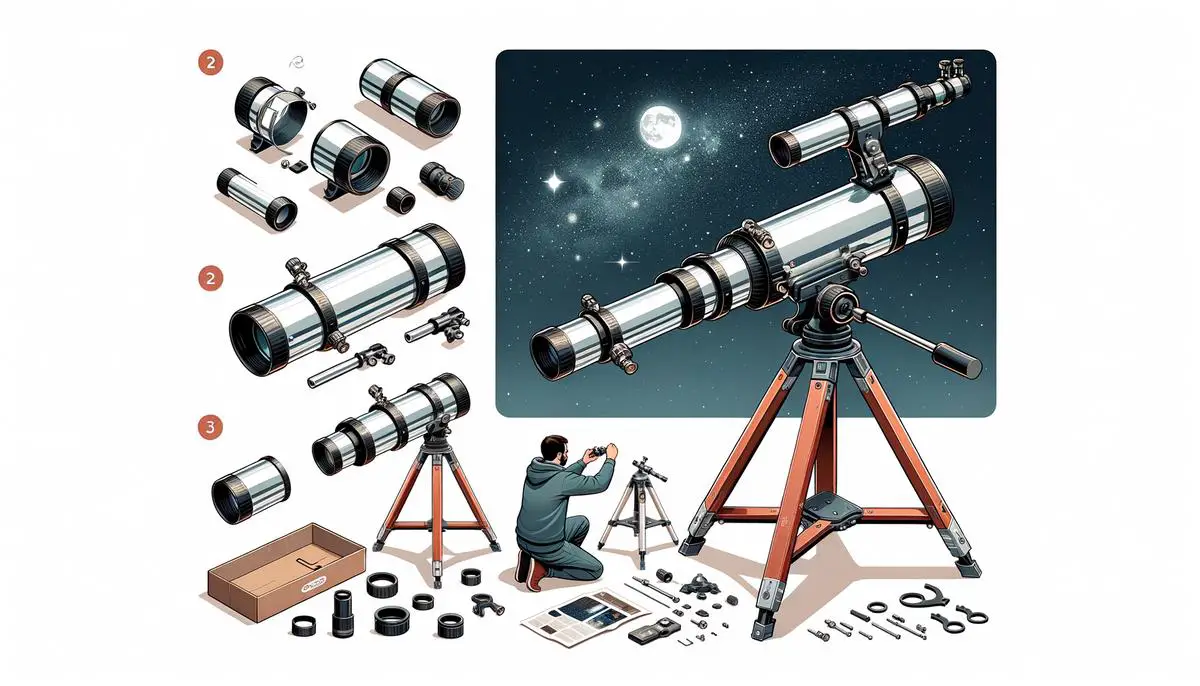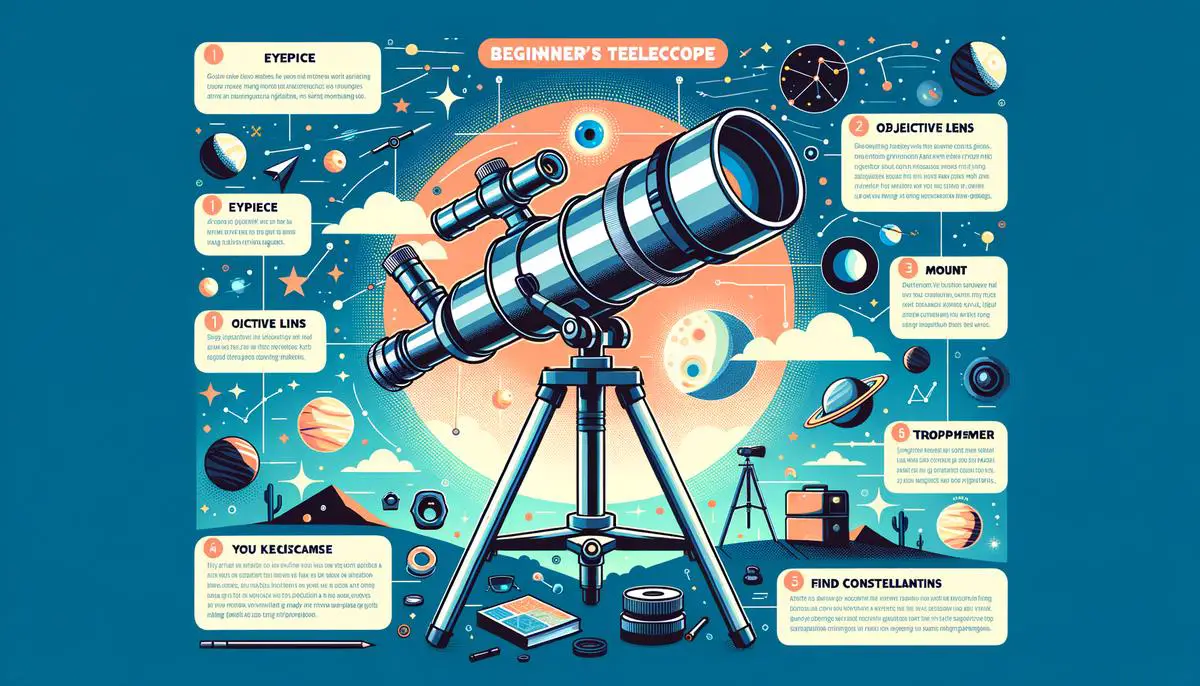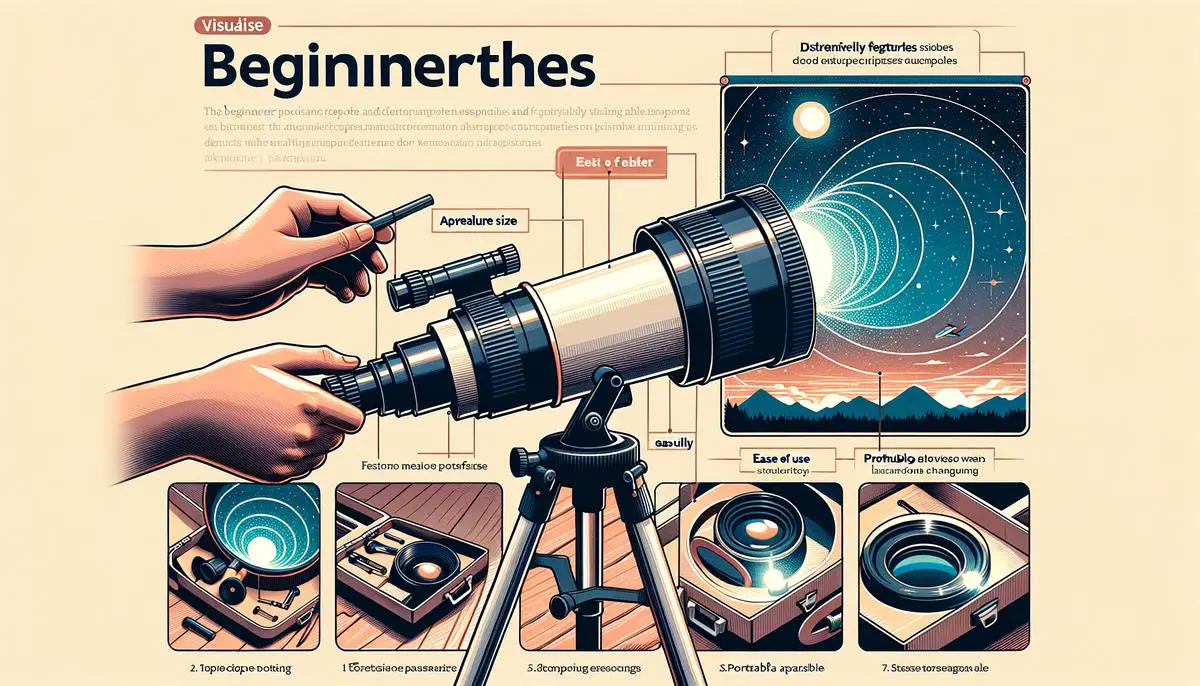Entering the realm of astronomy with the perfect telescope opens up a universe of awe and discovery. For beginners, choosing the right telescope is the first step toward enjoying the wonders of the night sky. This article will discuss essential features to look for in a beginner telescope, ensuring your experience is both enjoyable and enlightening.
Key Features of Beginner Telescopes
Choosing the Right Beginner Telescope: Key Features Explained
Stepping into the world of astronomy can be exhilarating with the right telescope by your side. For beginners, picking out the perfect telescope is crucial for a smooth and enjoyable journey through the stars. Let’s break down the essential features you should consider when shopping for your first telescope.
Aperture Size: The aperture of a telescope is essentially its heart. Measured in either inches or millimeters, the aperture size indicates the diameter of the telescope’s primary lens or mirror. A larger aperture allows more light to enter the telescope, making distant stars and galaxies appear brighter and more detailed. For beginners, an aperture of at least 70mm (2.8 inches) is a good starting point, but if your budget allows, aiming for something in the 130mm (5 inches) range can significantly enhance your viewing experience.
Mount Type: The mount is what holds your telescope steady, and there are two primary types to consider: Altazimuth and Equatorial. Altazimuth mounts are user-friendly and straightforward, allowing you to move the telescope up, down, left, and right. They are ideal for beginners due to their simplicity and ease of use. Equatorial mounts, on the other hand, are designed to follow the rotation of the Earth. They require a bit more learning upfront but are incredibly effective for tracking celestial objects as they move across the sky.
Magnification: Magnification is a feature that newcomers often prioritize, but it’s important to understand its relationship with aperture. Magnification is determined by the telescope’s eyepiece, and while higher magnification might seem better, it’s the aperture that ultimately determines how clear and crisp your view will be. Look for a telescope that offers a variety of eyepiece options, allowing you to adjust the magnification based on what you’re observing.
Portability: Consider how and where you plan to use your telescope. If you envision taking it on trips or to remote viewing locations, portability becomes a significant factor. Refractor telescopes and some compact reflector models offer a good balance between optical quality and ease of transport.
Ease of Use: For someone just starting, it’s important that the telescope not only matches their astronomical interests but also is straightforward to set up and operate. Many beginner telescopes come with user-friendly features such as “GoTo” technology, which can automatically point your telescope to various celestial objects, making it easier to dive into stargazing without the hassle of manual navigation.
Accessories: Finally, consider what comes with the telescope. A good beginner’s telescope often includes additional eyepieces, a finderscope (to help you locate objects), and sometimes even astronomy software to guide your explorations. Additional accessories can enhance your viewing experience and provide an easier learning curve as you get accustomed to your new telescope.
In selecting your first telescope, balancing these features against your personal interests, budget, and how you plan to use the telescope will guide you toward the right choice. Remember, the best telescope for beginners is one that sparks excitement and curiosity, inviting you to explore the night sky with clarity and enthusiasm.

Setting Up Your First Telescope
Setting up a Beginner Telescope for the First Time
Embarking on the journey of astronomy with a new telescope weaves a blend of excitement and curiosity. The thrill of exploring celestial bodies for the first time is unmatched. However, the initial setup of a beginner telescope is crucial to ensuring that your stargazing experience is nothing short of mesmerizing. With a step-by-step approach, setting up your telescope can be both straightforward and rewarding.
Firstly, selecting the perfect observation spot lays the groundwork for a clear view of the sky. Opt for a location that is away from excessive light pollution, such as city lights, which can significantly hinder the visibility of stars and planets. A backyard with a wide, unobstructed view of the sky is ideal. Additionally, ensure the chosen surface is flat and stable to prevent any movement that could disrupt your celestial observations.
Upon deciding on the location, it’s time to assemble the telescope. Begin by securely attaching the tripod legs. This foundational step is paramount as it provides the necessary support for your telescope. Most beginner telescopes come with a manual that includes specific instructions for assembly. Follow these directions carefully to ensure each component is fitted correctly.
After assembling the tripod, mount the telescope tube. This involves securing the tube onto the mount, ensuring it is tightened sufficiently to prevent any wobble, yet not so much as to damage the equipment. The mount is a critical piece of the telescope setup, as it controls the movement and stability of the instrument.
Next, the focus should shift to aligning the finder scope. The finder scope is a smaller, secondary scope mounted alongside the main telescope tube. Its purpose is to help you locate celestial objects more easily. By ensuring it is correctly aligned with your main telescope, finding objects in the night sky becomes significantly less challenging. A practical approach is to align the finder scope during the day by choosing a distant object on land and adjusting the finder scope until the object is centered in both views.
The final step before the celestial exploration can begin is to insert the eyepiece. The eyepiece is crucial as it magnifies the light collected by the telescope, making distant objects visible. Start with a low-power eyepiece to find objects in the sky more easily, then switch to a higher power eyepiece for more detailed observations. Remember to handle the eyepiece with care to avoid any damage.
With these steps completed, your telescope is now ready for its inaugural glimpse into the cosmos. Remember, patience and practice are key to mastering the art of stargazing. Each observation session will enhance your skills, gradually revealing the wonders of the night sky. Whether it’s the craters of the Moon, the rings of Saturn, or the nebulae in deep space, the universe awaits to unfold its mysteries through the lens of your beginner telescope.

Top Telescope Models for Beginners
Choosing the right telescope for beginners goes beyond aperture size and magnification; essential factors like focal length and optical quality also play crucial roles. Let’s delve into these considerations, ensuring your first stargazing experience is rewarding.
Focal Length and Ratio: The focal length of a telescope is the distance between the lens or mirror and the point where the telescope forms an image. A longer focal length provides higher magnification, ideal for viewing distant galaxies and nebulae. Conversely, a shorter focal length suits wide-field observations, such as star clusters and the Milky Way. The focal ratio (focal length divided by the aperture) affects the telescope’s brightness and sharpness, with lower ratios offering wider, brighter views suitable for deep-sky observation.
Optical Quality: The optics’ quality influences how clear and crisp the images appear. Telescopes with high-quality optics provide sharp, bright images free from distortions like chromatic aberration, where colors fringely separate. Reflecting telescopes, using mirrors, typically offer better optical quality for the price compared to refractors, which use lenses.
Refractors vs. Reflectors: For beginners, the choice between refractor and reflector telescopes is pivotal. Refractors are low maintenance, with a sealed tube that keeps optics clean and aligned. They excel in viewing planets and lunar surfaces but tend to be more expensive per inch of aperture. Reflectors, offering more aperture for your dollar, are superb for deep-sky observing. However, they require regular collimation (alignment of optics) to maintain performance.
Computerized Mounts: While not a necessity, a computerized mount can significantly enhance the beginner’s experience. These mounts automatically point the telescope at celestial objects and track them across the sky, making finding and observing objects easier and more enjoyable. They’re especially useful in light-polluted areas where manually locating objects can be challenging.
When choosing a telescope model, consider these factors in conjunction with the telescope’s portability, ease of use, and included accessories. Brands like Orion, Celestron, and Sky-Watcher offer excellent starter models that balance quality and usability. The Orion StarBlast 4.5 Astro Reflector, for example, is lauded for its user-friendly design and exceptional optical quality. Celestron’s AstroMaster series provides a good mix of refractor and reflector telescopes with options for manual or computerized mounts, catering to various beginner preferences.
In sum, selecting the right telescope is a balance of personal preferences, intended use, and budget. Starting with a model that offers a blend of easy-to-use features, decent optical quality, and the flexibility to explore different celestial sights lays a solid foundation for a rewarding astronomy hobby. Remember, the best telescope for you is the one that you will use most often, fostering your curiosity and love for the stars.

Embarking on the exploration of the cosmos with a beginner telescope is an exciting step towards unlocking the mysteries of the universe. The right telescope not only brings distant galaxies and star clusters into view but also ignites a lifelong passion for stargazing. By considering the key features outlined in this article, you are well on your way to choosing a telescope that will serve as a gateway to the stars, enhancing your appreciation of the night sky and the vast cosmos beyond.
![]()
